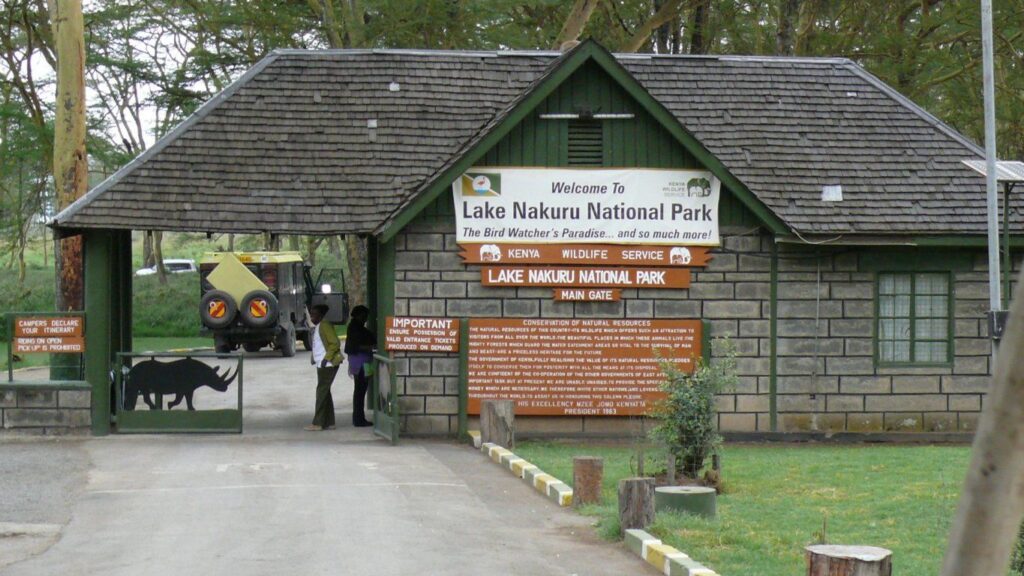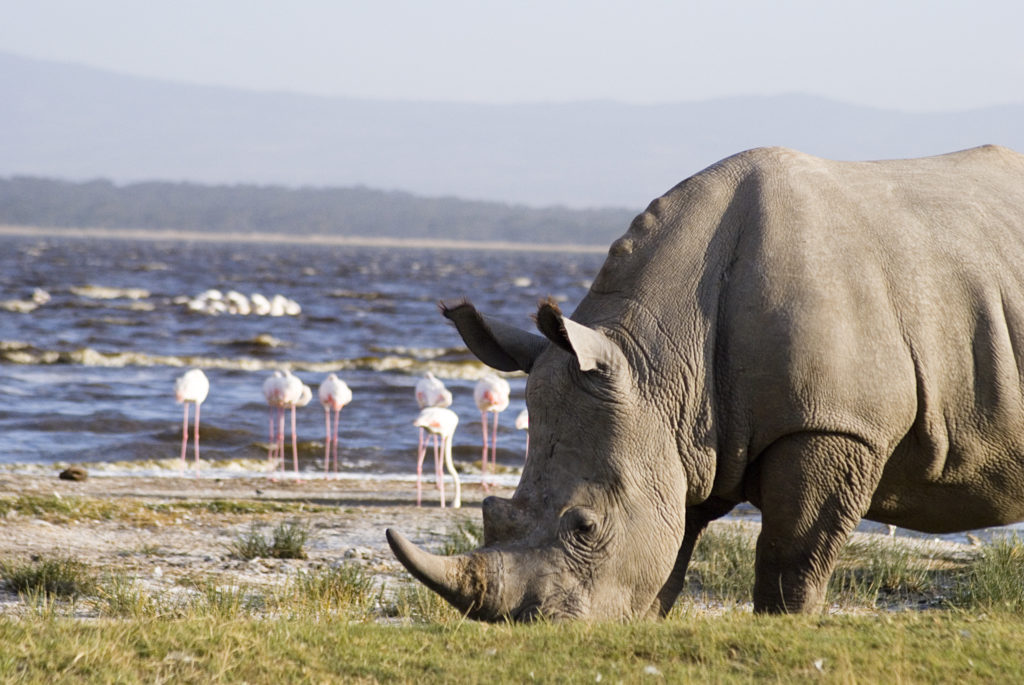Self Drive Guide to Lake Nakuru National Park
Lake Nakuru National Park is situated in west-central Kenya and is one of the saline lakes within the lake system of the Great Rift Valley in eastern Africa. Lake Nakuru is renowned mostly for its diverse types of aquatic birds, particularly the abundant pink flamingos. Additionally, it is home to waterbucks, impalas, and hippopotamuses. The town of Nakuru is situated on its northern shore. Lake Nakuru National Park encompasses the lake and surrounding territories.
The facts regarding Lake Nakuru National Park provide insight into the remarkable tour experience in Kenya, highlighting its most intriguing aspects. Lake Nakuru National Park is a protected area that draws considerable interest from visitors to Kenya. The distinctive attributes of Lake Nakuru National area contribute to its popularity as a tourist destination, and the area is safeguarded by the Kenya Wildlife Service.
Information regarding Lake Nakuru National Park.
Flamingos.
Lake Nakuru National Park is home to millions of flamingos, comprising two species: the lesser flamingo and the greater flamingo. The greater flamingos are taller and exhibit a darker shade of pink, while the lesser flamingos are shorter and possess a lighter hue of pink.
Flamingos
Flamingos mostly consume blue-green algae, which contributes to their pink coloration, along with shrimp and some aquatic invertebrates. Lake Nakuru, located within Lake Nakuru National Park, is abundant in blue-green algae, making it an ideal habitat for flamingos. The lake is encircled by dense, lush woodland, providing an ideal habitat for flamingos to construct their nests. These qualities, among others, render Lake Nakuru an ideal habitat for these flamingos.
Lake Nakuru.
Lake Nakuru is one of the soda lakes in the Rift Valley. Lake Nakuru is situated at an elevation of 1754 meters above sea level, located to the south of Nakuru County. Similar to the park, Lake Nakuru is located 3 to 4 hours northwest of Nairobi City.
The Five Major Personality Traits.
Lake Nakuru National Park is home to four members of the Big Five (lions, rhinos, buffaloes, and leopards) and also contains several other species, including giraffes, hippos, warthogs, vervet monkeys, olive baboons, colobus monkeys, and many others.
Avian species.
Lake Nakuru National Park is home to over 500 avian species, with the soda lake serving as a prominent birding hotspot that supports diverse birdlife beyond the flamingos. Notable species include large flocks of pelicans, the Abyssinian thrush, the Arrow-marked babbler, and the Bateleur. Nakuru is also recognized as one of the premier locations in Kenya to observe the long-tailed widowbird, alongside a commendable variety of raptors, including Verreaux’s and long-crested eagles.
The rhinoceros refuge.
The Rhino Sanctuary at Lake Nakuru National Park was the inaugural Rhino Sanctuary in Kenya and presently has the biggest population of black rhinos in the nation. The rhino sanctuary was founded in 1984 with the introduction of the first two rhinos to the Lake National Park premises. The rhino sanctuary in Lake Nakuru National Park was created by the Kenyan government to combat the severe decrease of endangered rhino species in the wild throughout Kenya.
Border enclosure of the park.
Lake Nakuru National Park encompasses an area of 183 square kilometers and is encircled by a three-meter-high parallel wire electric fence. In certain sections, especially those adjacent to the rapidly expanding city of Nakuru, the fence incorporates an additional woven wire mesh that extends 1 meter underground to deter wildlife from excavating their escape.
Climatic conditions.
The climate of Lake Nakuru is temperate, with stable temperatures throughout the year. Daytime temperatures are agreeable, ranging from the mid to upper twenties, while nighttime temperatures are significantly cooler. Warm attire for early morning game drives is essential. April and May are the months with the highest precipitation. The remainder of the year is predominantly arid, with intermittent rainfall.

Best time for visiting Lake Nakuru National Park.
The peak months for tourist visits to Lake Nakuru National Park are January, February, March, June, July, August, September, and October, as these months represent the driest period of the year, enhancing the profitability and enjoyment of your tour in the park.
History of Lake Nakuru National Park.
Lake Nakuru National Park originated in the 1950s as a site for avian observation and sport shooting of migratory birds, but has subsequently been enlarged and enclosed to safeguard the populations of endangered giraffes and rhinoceroses. In 1987, the park was designated as a rhinoceros refuge.
Thoroughfares within parks.
Lake Nakuru National Park is connected to Nairobi by a tarmacked road, located 156 kilometers northwest of Nairobi along the main A104 route. The primary access point to the park is via the main gate, located 4km from Nakuru Town center. Access to the park is available via the Lanet Gate from the major Nairobi Nakuru road.

The Maasai community.
The inhabitants of Lake Nakuru National Park are the Maasai, although migration and integration have led to the settlement of other tribes as well. The Maasai are an indigenous semi-nomadic ethnic group in Africa, residing in Kenya and northern Tanzania. Renowned for their unique traditions, customs, and attire, they are prominently associated with the numerous national parks of East Africa.
Maasai Mara Lake Nakuru National Park is renowned for its hundreds, occasionally millions, of flamingos nesting along the shoreline, rendering the surface of the tiny lake nearly unrecognizable due to the constantly moving mass of pink. This provides an unparalleled safari experience during your vacation to Kenya, primarily because to the flamingos, which are distinctive elements of the park.
